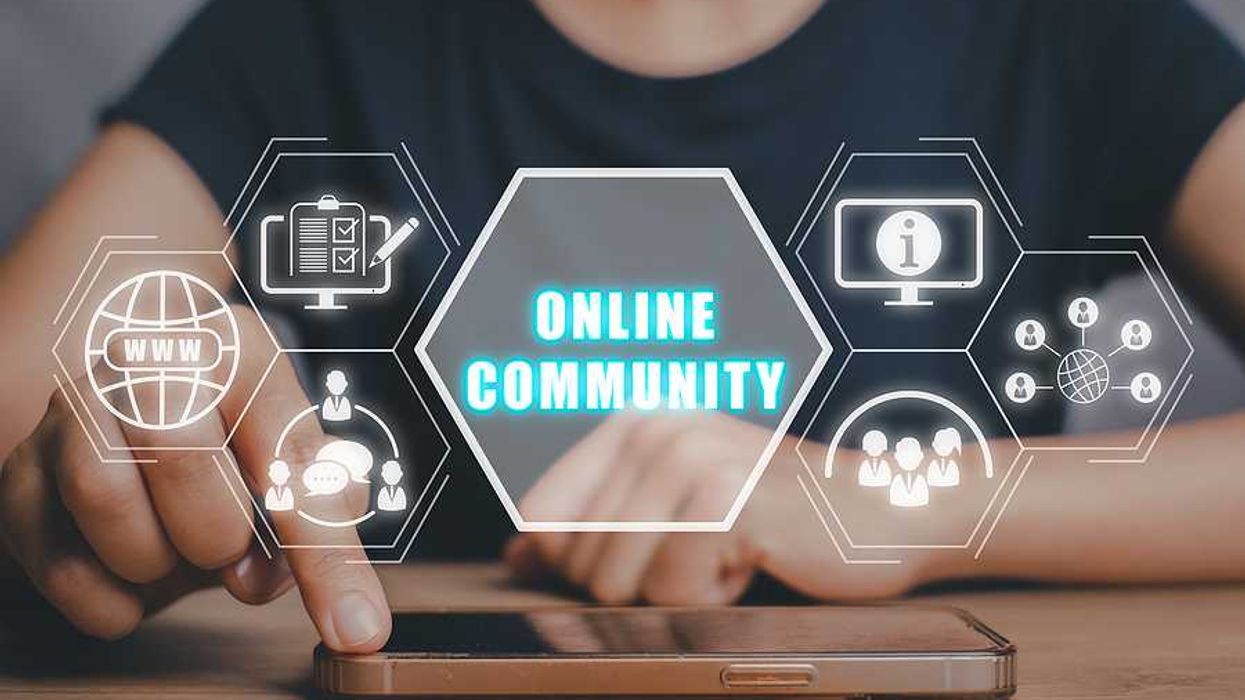
There's no doubt that things have shifted dramatically as a result of the COVID-19 pandemic. Now, leaders are asking themselves hard questions.
What does the next "normal" look like for them? And, how can they successfully implement new aspects of their culture into this new normal?
Here are four key things leaders must consider if they want to truly live their culture in the next new normal.
The Past Is Present?

Bigstock
The 2008 financial crisis forced leaders to rethink operations, supply chain, vendor management, employee engagement, ethics, and integrity. Layoffs were widespread and money vanished, while the real estate market collapsed amidst big bank failures fueled by consumers inability to pay excessive mortgages.
It's now 2020: The pandemic health crisis is new, yet the economic dynamics seem eerily familiar. With the exception of "essential workers" in the food (grocer), safety, and health sectors, business has shut down. Supply chain vendors, grocers, and healthcare systems struggle to keep pace with consumer need/demand as we experience roller-coaster infection rates, re-openings, and new shut-downs. How to survive this is anyone's guess as every day brings on new cases and more questions.
According to a Fortune 500 CEO survey, 97.2 % of CEO's said keeping employees safe and productively employed is their #1 concern. (1)
A company's strong employee culture and the ability to pivot quickly with evolving dynamics are key to thriving Post-COVID.
“Return” to Workspace (RTWS) — Can We? Should We? How Do We?

Bigstock
A company's culture must absolutely drive this question. Grant Reid, MARS CEO, said, "Part of my job is to import stress and export serenity...how do you bring them back safely into a work environment, keep the social distance and allow them to be successful and safe? Your associates are looking for stability, some hope, some compassion, some trust." (2)
The physical aspect of return is critical. "Companies are re-evaluating physical layouts specific to each employee. They are looking at common areas; multi-tenant commercial spaces...and rearranging reception common areas." (2)
Workstations need more distance and hallways need to become one-way venues. Employers must also evaluate testing protocols for employees, frequency of testing, and qualified caregivers conducting those tests. GoHealth Urgent Care is providing clinical back-up when employer resources are unavailable. (3)
Occupational Safety and Health Administration (OSHA) has created guidance on engineering and administrative controls for preparing the workplace for re-entry. (4) And, the EEOC has issued updated guidance on how employers can avoid violating the ADA and other employment laws in addressing the virus. (5)
Significant concerns arise for Workers Compensation insurance. Historically, community-spread illnesses (e.g., cold or flu) have been excluded. Six states recently passed "presumptive" legislation, and 14 total have expanded regulations to include COVID-19 as a workplace illness. To complicate matters, other injuries in the workplace may go unreported, or claims closures extended since non-urgent treatment is delayed in most jurisdictions. (6)
Regulatory Climate: “Innovating Change, Governance & Compliance”

Bigstock
One of the many challenges from this pandemic has been dealing with an ever-changing regulatory climate. With Workers Compensation rule changes, amendments to health benefits, the need for Childcare/Adult care, and the implementation of the Families First Coronavirus Response Act (FFCRA), companies have struggled to make difficult decisions to care for their employees.
This is the time to look for innovative ways to step up employee benefits such as adding paid sick leave, amending sick policies to ensure employees are paid even if the business is closed, and unlimited paid sick leave even for workers not previously covered, such as hourly workers. Adding child care reimbursement, and increased emergency child care and eldercare benefits can help your employees deal with the pressures of working from home.All group health plans will need to adopt changes to ensure that their plans comply with changes made by the FFCRA and the CARES Act and provide sufficient benefits to combat COVID-19. (7) Under the acts, group health plans will have to do the following:
- Cover the full cost without cost-sharing (i.e., deductibles, copayments, or coinsurance) of testing for COVID-19. This requirement extends to tests provided by both in-network and out-of-network providers and is mandated for the duration of the public health emergency. Both swab tests that collect a specimen from an individual's upper respiratory tract to diagnose a case of COVID-19 and approved blood tests that look for antibodies to the coronavirus must be covered
- Once developed, group health plans will also be required to provide coverage without any cost-sharing for coronavirus vaccines.
To lessen the anxiety of your employees, consider adding or extending mental health benefits that are personalized and confidential, and offer telehealth services.
Employee Wellness and Benefits: “Are You Walking the Talk?”

Bigstock
According to J.S. Nelson, Villanova University Charles Widger School of Law professor, "The working landscape has changed, perhaps forever. How employees and management move forward from this experience will shape the workplace for decades to come. These challenges include" :
1. Recognizing individual circumstances
2. Reacting with empathy when feeling out of control
3. Maintaining transparency when feeling out of control
4. Not taking advantage of the situation to push other agendas
5. Remembering the power of healthcare and benefit coverage while not abusing them (8)
Understanding where your organization stands on these ethical challenges is a good foundation for the decisions you need to make for the future. Questions you then need to ask are:
- Are your mission, values, and culture still relevant today and in the near, very different future? Do you have a process in place to continually assess this?
- Is your culture helping or hindering your companies' performance?
- Are your employees weathering this "storm"? What do they need less of or more of to be happier and more productive? Can you even answer this question? Do you know how they feel?
- Are you looking for opportunities for hyper-personalization for your employees and customers? For example, do you give employees whose mental health issues worsened by working from home alone, priority when coming back to the office?
- How your employees view your stand on diversity, inclusion, equity, and belonging have always been important, but with the ultra focus in the past few weeks, how would you rate your organization? Have you made this a priority?
Your company's ability to effectively navigate the impact and stress on the employee base will drive resiliency and long-term sustainability. Your associates will be the first to say whether RTWS was successful, which inevitably will be reflected in your organization's product and ultimately in customer satisfaction.
Sources:
1.) See Fortune 500 CEO Survey, May 14, 2020
2.) See James Dean, MARS CEO Talks Life At Mars and steering through COVID-19, Times of London, May 9, 2020
3.) Wendy Knight - A conversation with Todd Latz, CEO, Go Health Urgent Care, May 7, 2020
4.) See Occupational Health & Safety Administration, OSHA.gov, Guidance on Returning to WorkGuidance on Returning to Work
5.) See Judy Greenwald, EEOC Expands Covid-19 Workplace Guidance, businessinsurance.com, May 7, 2020
7.) See Business Group on Health, Update on COVID-19 Testing Coverage, 03/2020
8.) See J.S. Nelson, 5 Ethical Challenges Employers Will Face As They Reopen, hrdive.com, June 17, 2020
P.S. — are you looking for a job? Work It Daily can help! Join today and get access to one-on-one career coaching, resume and cover letter reviews, online tutorials, and unlimited networking opportunities—all in your back pocket!
If you want free career advice in your inbox, subscribe to Work It Daily's newsletter, The Daily Dose!
- 3 Things All Employees Will Need After COVID-19 - Work It Daily ... ›
- How Leaders Can Successfully Manage Through A Crisis - Work It ... ›
- How To Transform Your Business For Success Post-COVID-19 ... ›

 Bigstock
Bigstock
 Bigstock
Bigstock
 Bigstock
Bigstock



